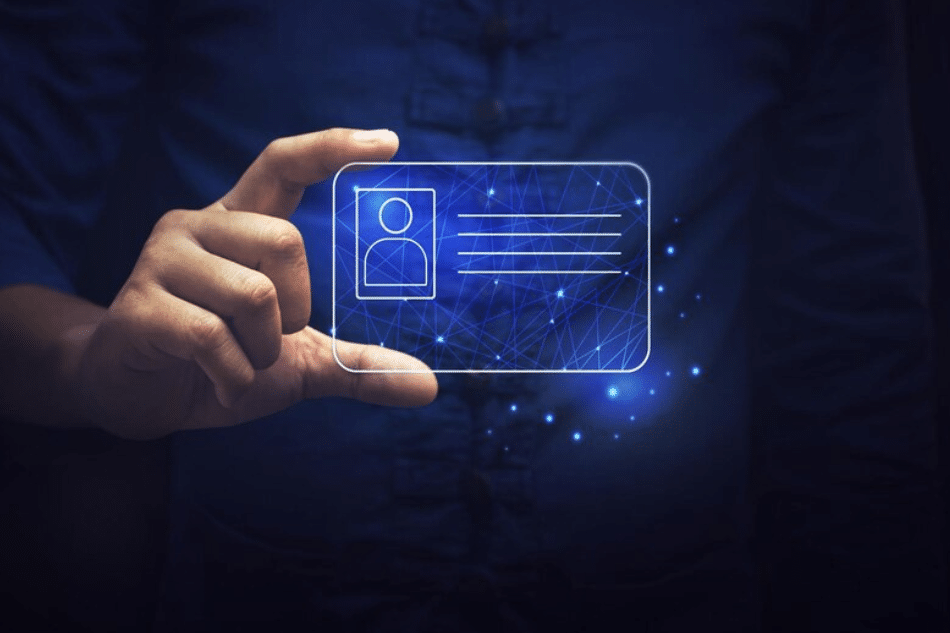ID card recognition is a digital process that accurately identifies and verifies various forms of identification. This technology utilizes advanced software to extract personal data from ID cards.
Recognizing and verifying ID cards efficiently is essential for many sectors, including finance, hospitality, and security. ID card recognition systems employ optical character recognition (OCR) technology to capture and convert card information into digital form. These systems enhance operational efficiency, minimize human error, and safeguard against fraud by ensuring that only authentic IDs are accepted.
By comparing card details against existing databases, these systems provide quick and secure authentication. This seamless verification process is crucial for customer onboarding, access control, and regulatory compliance. As ID recognition technology advances, it becomes more integral to processes that require reliable identification to maintain safety and integrity.
Evolution Of ID Recognition

Early Methods And Their Drawbacks
The onset of ID recognition involved manual verification processes. Methods such as physical inspection of ID documents were the norm. Security officials would rely on visual cues to verify the authenticity of an ID card, which introduced several drawbacks:- Time-consuming: Manual checks were slow and could lead to long lines and delays.
- Error-prone: Human error was a frequent issue, with the potential for incorrect verifications.
- Limited security: Physical IDs could be easily forged or altered, posing a security risk.
Transition To Digital Solutions
As technology advanced, the transition to digital solutions marked a significant step forward in ID recognition. Digital scanning devices and basic computer systems began to replace the manual inspection of IDs. This shift introduced improvements like:- Enhanced accuracy: Automating the process reduced the rate of human error.
- Better efficiency: Faster processing times meant quicker verifications.
- Improved security: Digital systems could detect more sophisticated forms of ID fraud.
Advances In Computing Power And AI
The most recent leap in ID recognition technology owes much to the advances in computing power and artificial intelligence (AI). This cutting-edge shift has led to the development of systems capable of performing complex tasks like:- Facial recognition: Comparing live images with ID photos for real-time authentication.
- Machine learning: Improving the accuracy of ID verifications as more data is processed.
- Pattern recognition: Identifying unique features in ID documents that are invisible to the human eye.
How ID Card Recognition Works
The Technology Behind Optical Character Recognition (OCR)
At the heart of ID Card Recognition lies Optical Character Recognition (OCR), a pivotal technology that converts different types of documents, such as scanned paper documents or images of IDs, into editable and searchable data. Here’s a breakdown of the OCR process:- Pre-processing: The image of the ID card is conditioned to enhance the text’s readability. This may involve adjusting brightness, contrast, or removing any skew.
- Text Recognition: OCR software scans the pre-processed image to detect and isolate characters.
- Character Analysis: Each character is then analyzed and compared to a set of predefined patterns or a learned dataset.
- Post-processing: Finally, the software validates the recognized text against a set of rules or dictionaries to improve accuracy.
Role Of Machine Learning In Pattern Recognition
Machine learning significantly bolsters the efficacy of pattern recognition in ID Card Recognition systems. Unlike traditional OCR, machine learning-powered systems are not entirely reliant on pre-set patterns. Instead, they learn from a myriad of ID card samples, continuously improving their ability to recognize text and design patterns. They do this through:- Training: By feeding the system diverse ID card images, it learns to identify various fonts, formats, and styles, even under suboptimal conditions.
- Classification: Machine learning algorithms classify and remember unique attributes of ID elements, leading to better accuracy over time.
- Validation: With each successful recognition, the system validates its pattern recognition module, refining its ability to discern legitimate IDs from forged ones.
Challenges And Approaches In Anti-fraud Systems
ID Card Recognition is not without its challenges, especially when it comes to anti-fraud measures. Fraudsters are continually finding new ways to bypass authentication systems, making it imperative for recognition systems to be robust and adaptive. Here’s how modern systems are staying ahead:- Adaptive Algorithms: They adjust to new fraudulent patterns, making the system resilient against evolving threats.
- Multi-Factor Authentication: By combining OCR with technologies like biometrics, the chances of fraud decrease substantially.
- Security Features Recognition: Advanced systems are equipped to detect security features such as holograms, micro text, and watermarks that are hard to replicate.
Impact On Security And Privacy

Enhancing Security Measures With Biometrics
Biometric technology is at the heart of modern security enhancements offered by ID Card Recognition systems. By integrating biometric identifiers, such as fingerprints, facial recognition, and iris scans, these systems provide a robust layer of security that is difficult to breach. Individuals can be identified swiftly and accurately, making unauthorized access to secure areas or information systems markedly more challenging. Biometric-based ID Card Recognition harnesses the power of unique personal attributes, thereby elevating security standards to new heights.- Reduced reliance on traditional security methods like passwords and PINs
- Quick and efficient user verification processes
- Minimized risk of identity theft and fraud
Data Protection And Privacy Concerns
As ID Card Recognition systems become more widespread, data protection and privacy emerge as pressing concerns. Storing sensitive biometric data presents a potential risk for data breaches that could lead to privacy violations. These systems must employ advanced encryption methods to secure personal information against unauthorized access. Furthermore, compliance with legal frameworks designed to protect user privacy, such as GDPR, ensures that the collection and processing of biometric data upholds stringent privacy standards.| Data Aspect | Privacy Measure |
|---|---|
| Storage of Biometric Data | Implementation of robust encryption |
| Access to Personal Information | Strict authorization protocols |
| Compliance | Adherence to international privacy laws |
Balancing Convenience And Safety
Efficient ID Card Recognition systems harmonize the scales of convenience and safety. They ensure that user access is streamlined and hassle-free while maintaining the integrity of secure environments. This balance is critical for user acceptance and the long-term success of these systems. By focusing on user-friendly interfaces and speedy processing alongside robust security measures, ID Card Recognition systems achieve an optimal balance that underpins the secure and smooth operation of facilities ranging from airports to corporate buildings.- Streamlined access and user experience
- Maintained high-level security protocols
- Increased adoption and user trust
Integration With Iot And Smart Systems
Seamless Access And Smart Authentication
Embracing the digital era, ID card recognition has become a cornerstone for seamless access in numerous applications. This technology, when synchronized with smart devices, offers a frictionless entry experience that’s not only quick but also highly secure.- Touchless Entry: The integration enables a touchless entry system that can detect and verify identities from a distance, reducing wait times and eliminating physical contact.
- Data Encryption: Smart systems ensure that the data captured by ID card scanners is encrypted, adding an extra layer of security to the authentication process.
- Real-Time Alerts: Receive instant notifications on your smart device when an ID card is scanned, keeping you informed at all times.
Case Studies: Smart Homes And Cities
The impact of ID card recognition technology on smart homes and smart city infrastructures is profound. Here are case studies that demonstrate its transformative role:| Case Study | Application | Outcome |
|---|---|---|
| Smart Home Security Systems | Residential access control | Enhanced security with personalized, keyless entry |
| Urban Transit Networks | Public transportation access | Streamlined commuter flow with decreased congestion |
Future Implications And Potential
The future implications of integrating ID card recognition with IoT are substantial. This fusion holds the potential to revolutionize security and accessibility:- Predictive Analysis: IoT devices can utilize the patterns recognized in ID card usage to predict and adapt to future behaviors.
- Widespread Adoption: As the cost of technology decreases, it’s viable for small businesses and residential areas to adopt smart systems, widening the sphere of influence of ID card recognition.
- Enhanced AI Integration: Artificial intelligence can enhance the accuracy of ID card recognition, further streamlining authentication processes.
Innovations In Mobile ID Recognition
Advancements In Smartphone Capabilities
The rapid evolution of smartphone technology has laid the foundation for the latest mobile ID recognition systems. Today’s smartphones are equipped with high-resolution cameras, powerful processors, and advanced AI capabilities that together make ID scanning and recognition seamless and reliable. Users can now simply use their smartphone cameras to capture their ID documents, and sophisticated algorithms instantly check for authenticity and extract relevant data.- Biometric Integration: Integration of technologies like facial recognition and fingerprint scanning boosts security and minimizes fraud potential.
- AI and Machine Learning: These technologies enhance the accuracy of ID document analyses, continually improving with every scan.
- Optical Character Recognition (OCR): Enhanced OCR allows for swift extraction of text data from a wide range of ID documents.
Mobile Apps And Identity Verification Services
With the surge in digital transactions, mobile apps have become a favored platform for identity verification services. Financial services, retail, public transportation, and hospitality industries are among the many sectors leveraging mobile ID recognition apps to enhance security and customer convenience. These apps often feature:- User-friendly interfaces that guide individuals through document scanning and verification steps.
- Real-time verification that confirms identities within moments, facilitating immediate access to services.
- Encrypted data storage and transmission, preserving user privacy and security.
User Experience And Adoption Rates
The success of mobile ID recognition heavily depends on user experience and the resulting adoption rates. Striking the right balance between stringent security measures and usability is key to widespread acceptance. Providers focus on designing intuitive UI/UX, reducing the number of steps required to verify an ID, and ensuring compatibility across different devices and operating systems. Positive user feedback and high adoption rates are often driven by:| Factor | Impact on User Experience |
|---|---|
| Speed | Fast processing encourages users to prefer mobile ID over traditional methods. |
| Accuracy | Minimizing errors in ID recognition builds trust and reliability among users. |
| Convenience | The ease of use leads to higher retention and ongoing usage of mobile ID apps. |
Industry Applications And Case Studies
Financial Sector And KYC Compliance
The financial industry relies heavily on knowing the customer (KYC) procedures to prevent fraud and meet stringent regulatory requirements. ID card recognition plays a crucial role in this process by automating and speeding up identity verification. Here is how it works:- New customers scan their ID cards using their smartphone or webcam.
- The ID recognition system verifies the authenticity of the card and extracts key data.
- Customer information is then cross-checked with external databases for added security.
Government And Law Enforcement Use Cases
Government agencies and law enforcement units leverage ID card recognition to ensure citizen safety and enforce legal compliance. Here’s what makes ID card recognition an invaluable tool:- It aids in the swift validation of individuals during traffic stops or public incidents.
- In border control, ID recognition helps authenticate travel documents, reducing wait times and enhancing security.
- It’s instrumental in voter registration and verification processes, assuring the integrity of democratic operations.
Healthcare And Patient Identification Systems
The healthcare sector is another domain where ID recognition is making strides in improving patient care and administrative efficiency. It provides:- Quick patient identification at check-in, enhancing the patient experience and reducing wait times.
- Accurate record matching, ensuring that patients receive the correct treatments and medications.
- Streamlined registration for health services, allowing for better resource management and care planning.
Challenges And Future Directions

Overcoming Technological And Ethical Hurdles
The journey toward flawless ID card recognition entails overcoming a multitude of technological and ethical obstacles. From ensuring the accuracy of recognition systems to addressing concerns related to data privacy and biases in algorithms, the road ahead is replete with challenges:- Enhancing accuracy: Developers strive to improve recognition algorithms to minimize errors, distinguishing between genuine and fraudulent documents.
- Data protection: Stringent measures for safeguarding personal data against breaches and unauthorized access are crucial.
- Addressing biases: Eliminating algorithmic biases that could discriminate against certain populations is a top priority.
Predictions For Future Developments
The evolution of ID card recognition technology holds exciting prospects. Experts predict advancements centered around:- Integration of artificial intelligence and machine learning to enhance system adaptability and learning capabilities.
- Emergence of multi-modal biometric systems, combining facial recognition, fingerprints, and other identifiers for robust authentication.
- Development of portable and mobile solutions to cater to the increasing mobility of the digital era.
The Role Of Regulations And Standards
In the quest for technological excellence, regulations, and standards serve as the backbone for trustworthy ID recognition systems. They ensure:| Aspect | Role of Regulations and Standards |
|---|---|
| Consistency | Setting global benchmarks for system interoperability and compatibility. |
| Privacy Protection | Guiding the ethical collection, storage, and processing of personal data. |
| Quality Assurance | Ensuring the reliability and accuracy of recognition systems. |
Frequently Asked Questions On ID Card Recognition
How Does ID Card Recognition Work?
ID card recognition systems use optical character recognition (OCR) technology to scan and read personal information. They detect text fields on an ID card and digitize the information for easy data processing.
Can ID card Recognition Detect Fake IDs?
Advanced ID card recognition software often includes features to authenticate IDs. It checks security elements like holograms and barcodes to determine the card’s legitimacy.
What Are The Benefits Of ID Card Recognition?
ID card recognition helps streamline identity verification processes. It enhances security, reduces human error, and saves time in various operations like access control and customer onboarding.
Is ID card Recognition Software Easy To Integrate?
Many ID card recognition solutions offer APIs and SDKs for seamless integration. They can typically be integrated into existing systems without substantial changes.
Conclusion
Embracing the advancement of ID card recognition significantly enhances security and efficiency. It streamlines processes for businesses and institutions alike. With its growing precision and expanding applications, investing in this technology is a strategic move toward future-proof operations. Remember, staying ahead in the digital age means constantly evolving with cutting-edge solutions like ID card recognition.


